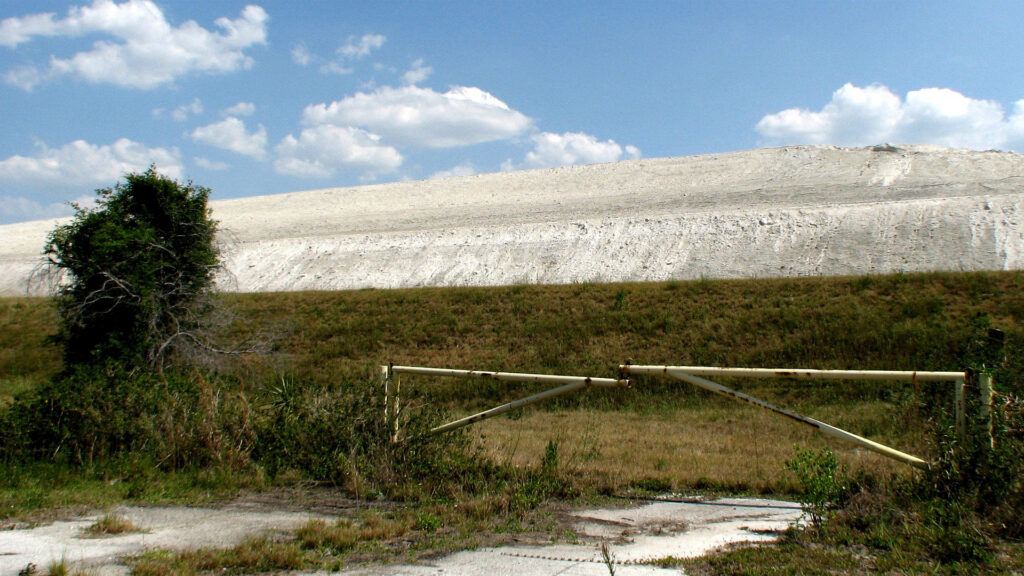A roundup of news items related to climate change and other environmental issues in Florida:
These Florida lawmakers oppose fertilizer giant Mosaic’s ‘radioactive roads’ | Tampa Bay Times

A coalition of state and local lawmakers is making its stance known to federal environment regulators: Don’t allow a Tampa-based Fortune 500 fertilizer company to pave its roads with phosphogypsum, the mildly radioactive leftovers from phosphate manufacturing.
At least 30 lawmakers on Monday urged the U.S. Environmental Protection Agency to deny an application from Mosaic to use more than 300 tons of phosphogypsum as a test ingredient in road construction at the company’s New Wales plant in Mulberry.
Right now, Mosaic stores its phosphate byproduct in land-based piles, called gypsum stacks or “gypstacks.” But in a move that critics claim is driven by the desire for more profits, the company wants to remove the byproduct from its New Wales gypstack and mix it into a 1,200-foot road.
Miami-Dade races to replace polluting septic tanks. Can it keep pace with sea rise? | Miami Herald
Underneath many homes and businesses in Miami-Dade is a concrete box. In goes human waste, and out comes somewhat filtered water.
They’re septic tanks, the old-fashioned version of waste management that has mostly been replaced around the country with sewer lines and sewage treatment plants. But as climate change sends water levels higher — both at sea and underneath our feet — those boxes aren’t working like they used to, and their stinky, toxic byproducts are flowing into Miami-Dade’s aquifer and Biscayne Bay, and in some cases, turning front lawns into fetid swamps.
South Florida has known they were a problem since the 1950s, but work to convert the estimated 120,000 (or likely more) that remain in the state’s most populated county has been excruciatingly slow. That is, until now.
The silver lining to storm surge: How some baby fish ride out hurricanes to success | Sun Sentinel
Humans loathe the deadly impact of storm surge, and for good reason. But new research shows how juvenile tarpon and snook can actually benefit from it. In turn, scientists are learning how to design more eco-friendly developments that help the fish survive.
Ongoing studies by the Florida Fish and Wildlife Conservation Commission and the Bonefish & Tarpon Trust show that young-of-the-year tarpon and snook take advantage of storm surge and king tides, essentially riding the water into remote semi-landlocked ponds. When the water recedes, the small tarpon and snook rule their new micro kingdoms, the proverbial big fish in small ponds.
Several studies pieced together indicate that spawning season for both tarpon and snook coincides with summer high tides and storm season, said JoEllen Wilson, a biologist with the Bonefish & Tarpon Trust.
If you have any news items of note that you think we should include in our next roundup, please email The Invading Sea Editor Nathan Crabbe at nc*****@*au.edu. Sign up for The Invading Sea newsletter by visiting here.



